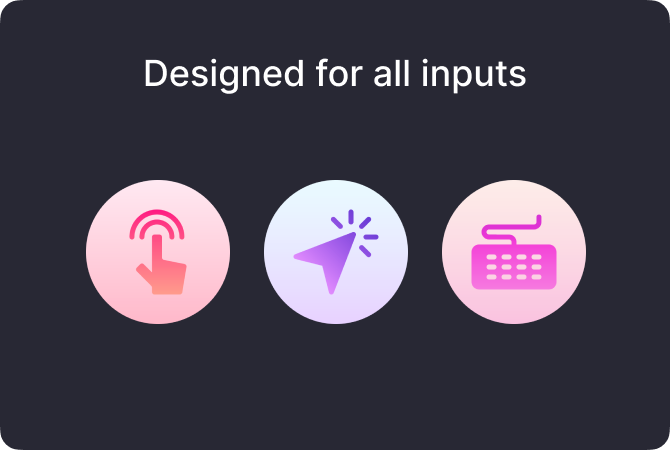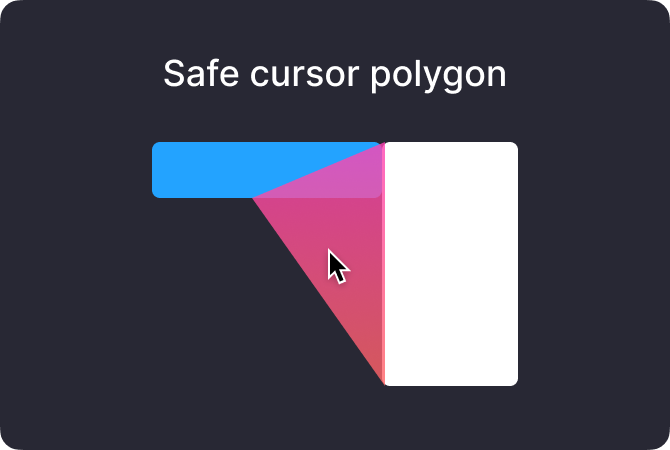React DOM Interactions
This package provides interaction primitives in the form of hooks and components that compose together to build higher-level floating UI components.
It works in tandem with the positioning engine to provide an
accessible foundation for a <Tooltip />,
<Popover />, <Select />, <Dropdown /> and
other components.


It is a superset of the React DOM positioning engine package and is unrestricting, allowing you to incorporate custom logic easily.
Install
npm install @floating-ui/react-dom-interactionsUsage
The useFloating() hook exported from this package accepts
an open boolean and onOpenChange as an
option to change that value (plus all the positioning props as
listed in the React DOM docs).
You use this boolean to conditionally render the floating element.
import {useState} from 'react';
import {useFloating} from '@floating-ui/react-dom-interactions';
function App() {
const [open, setOpen] = useState(true);
const {x, y, reference, floating, strategy} = useFloating({
open,
onOpenChange: setOpen,
});
return (
<>
<button ref={reference}>Button</button>
{open && (
<div
ref={floating}
style={{
position: strategy,
top: y ?? '',
left: x ?? '',
}}
>
Tooltip
</div>
)}
</>
);
}Hooks
useInteractions() accepts an array of called hooks in the
following predictable form:
import {
useFloating,
useInteractions,
useHover,
useFocus,
useRole,
} from '@floating-ui/react-dom-interactions';
// ...
const {context} = useFloating();
const {getReferenceProps, getFloatingProps, getItemProps} =
useInteractions([
useHover(context, props),
useFocus(context, props),
useRole(context, props),
]);Each hook accepts the context object which gets
returned from useFloating() as its first argument. Props
are passed as a second argument.
This API enables each of the hooks to be fully tree-shakeable. The navigation bar on the left explains them in detail.
Avoid importing all the hooks together like
import * as Interactions from '@floating-ui/react-dom-interactions'as this will nullify the benefits of tree-shaking.
Prop getters
useInteractions() returns
prop getters
— functions you call to return props that spread on the elements:
<>
<button {...getReferenceProps({ref: reference})}>
My button
</button>
<div
{...getFloatingProps({
ref: floating,
style: {
position: strategy,
left: x ?? '',
top: y ?? '',
},
})}
>
My tooltip
</div>
</>This pattern enables you to pass event listener props through the prop getters, which performs merging of its own internal event listeners and your own without overriding them.
Item prop getter
When dealing with a list inside your floating element
(useListNavigation()), pass these props to each item
element:
<div
{...getFloatingProps({
ref: floating,
style: {
position: strategy,
left: x ?? '',
top: y ?? '',
},
})}
>
<ul>
{list.map((item) => (
<li {...getItemProps({key: item})}>{item}</li>
))}
</ul>
</div>Without a list of items, this prop getter can be omitted (e.g. a regular tooltip or popover).
Examples
Here are a few example recipes for crafting common UI components (hosted on CodeSandbox).
Tooltip
Popover
Dialog
Dropdown Menu
Context Menu
Select (Listbox)
The interaction hooks are low-level, so you probably won't be using them without wrapping them with your own component API for ergonomics.